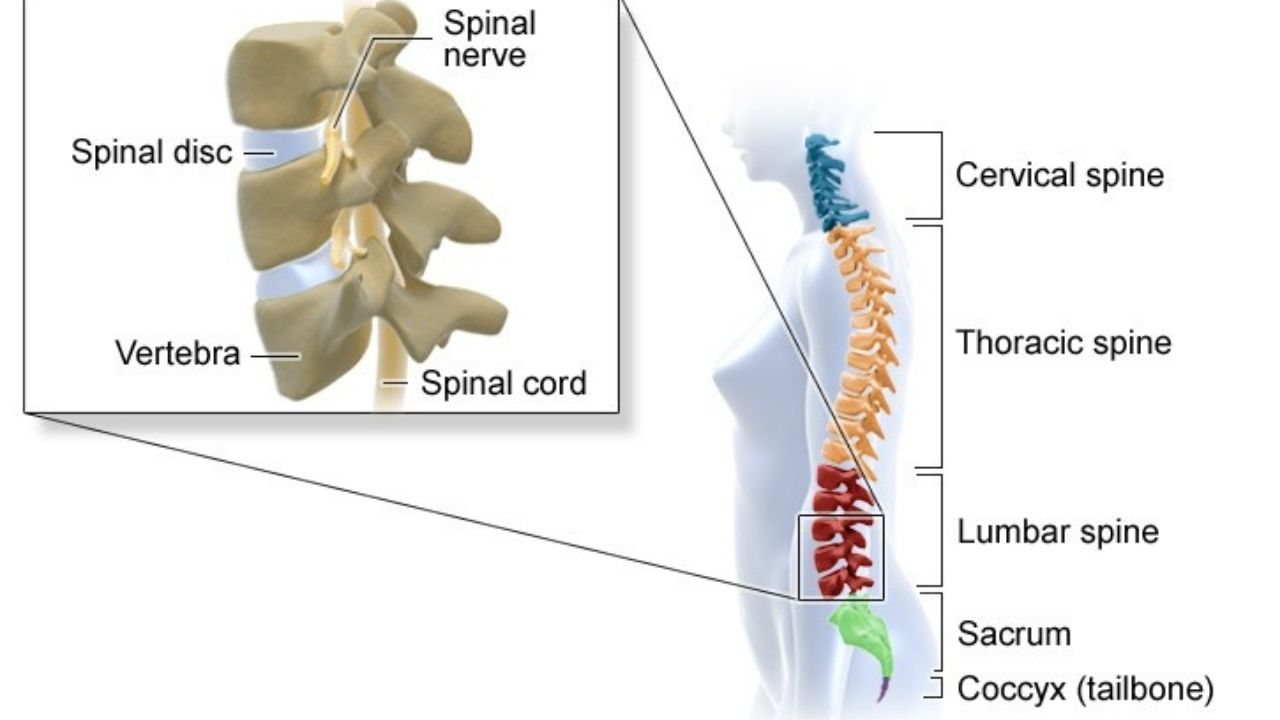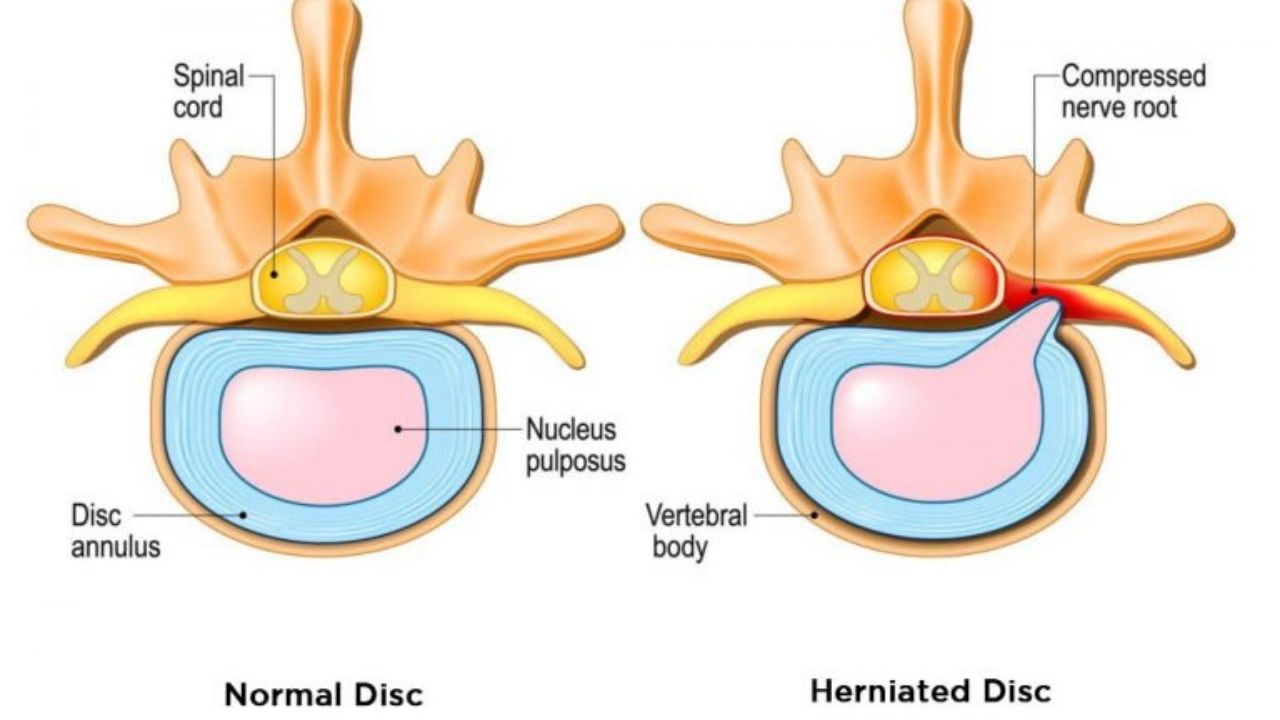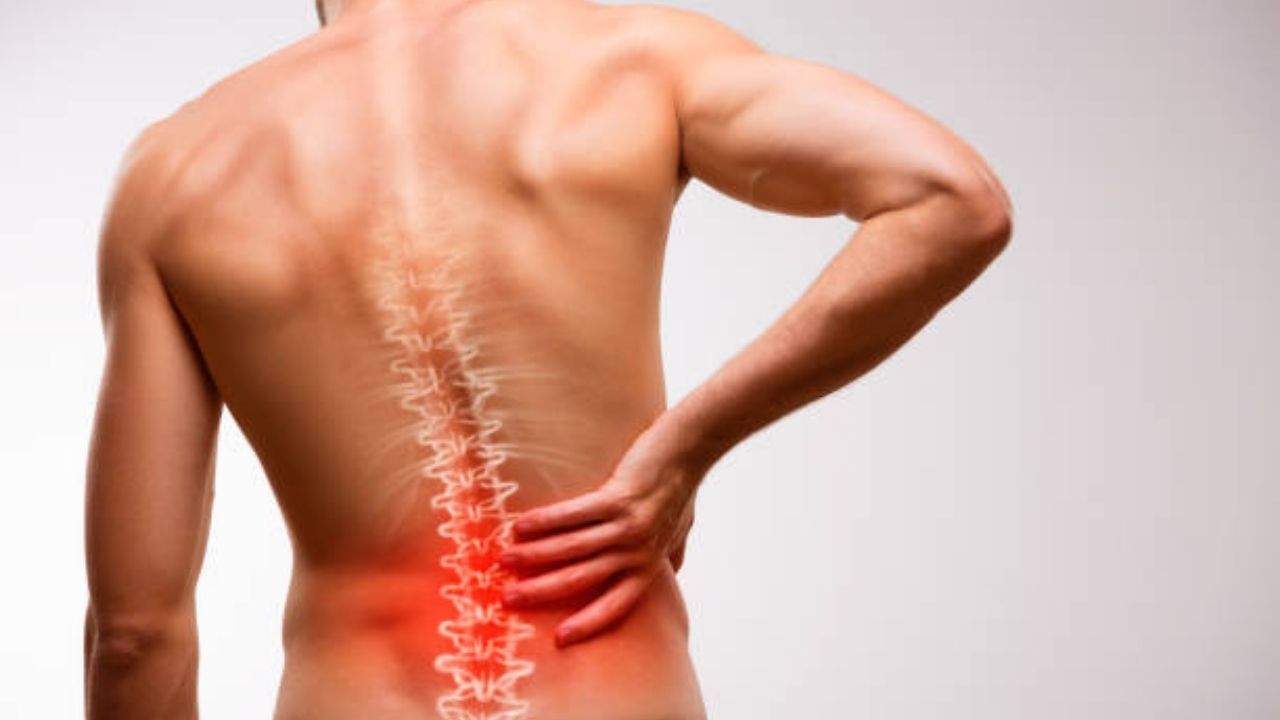Almost everyone will experience lumbago (low back pain) at some point in their lives. This pain can range from mild to severe and can be short or long lasting. However it occurs, low back pain can make many daily activities difficult.
Anatomy
Understanding your spine and how it works can help you understand why you have lumbago.
Your spine is made up of small bones called vertebrae, which sit one on top of the other. Muscles, ligaments, nerves, and intervertebral discs are additional parts of your spine.

Vertebrae
These bones connect to create a passageway that protects the spinal cord. The spine is divided into three sections that create three natural curves in your back: the curves of your neck (cervical), chest area (thoracic), and waist (lumbar). The lowest section of your spine (sacrum and coccyx) is made up of fused vertebrae.
Five lumbar vertebrae connect the upper part of the spine to the pelvis.
Spinal cord and nerves
These “electrical wires” travel through the spinal canal carrying messages between the brain and the muscles. Nerves extend from the spinal cord through openings in the vertebrae.
Muscles and ligaments
These provide support and stability to your spine and upper body. Strong ligaments connect your vertebrae and help keep your spine in position.
Between each vertebra are small joints that help move your spine.
Intervertebral discs
These are located between the vertebrae.
When you walk or run, these discs absorb shock and prevent the vertebrae from colliding with each other. The discs work in conjunction with your facet joints and help your spine move, bend, and twist.
The intervertebral discs are flat and round, and half an inch thick. They are made up of two components.
Annulus fibrosus. This is the tough, flexible outer ring of the disc. Helps connect the vertebrae.
Nucleus pulposus. This is the soft, jelly-like center of the annulus fibrosus. Gives the disc its shock absorbing abilities.
Description of lumbago
Lumbago (Low back pain) differs from person to person. The pain can be progressive or appear suddenly; It can be intermittent or constant. In most cases, low back pain goes away within a few weeks.
Causes of lumbago
There are many causes of lumbago. Sometimes it occurs after a specific movement such as lifting something or bending over. Even getting old causes a lot of back problems.
As we age, our spines age with us. The passing of the years causes degenerative changes in the spine. These changes can start in our 30s — or earlier — and can make us prone to low back pain, especially if we overdo our activities.
These aging changes, however, do not prevent people from living productive and often pain-free lives. We’ve all seen the 70-year-old marathon runner who undoubtedly has degenerative changes in her back!
Excessive activity
One of the most common causes of lumbago is muscle pain from over-activity. The fibers of the muscles and ligaments can be overstretched or injured.
This usually happens around the first softball or golf game of the season, or too much yard work or snow shoveling in one day. We’re all familiar with this “stiffness” and discomfort in the waist — and other areas of the body — that usually go away within a few days.
Disc injuries
Some people develop lumbago that does not go away within a few days. This may mean there is a disc injury.
Disc tear. Small tears on the outside of the disc (annulus) can sometimes occur with age. Some people who have these tears do not feel any pain. Others may be in pain for weeks, months, and even longer. A small group of people can develop constant pain that lasts for years and is quite disabling. It is not yet well understood why some people feel pain and others do not.
Disc herniation Another common type of disc injury is a herniated or “slipped” disc.
A disc herniates when its jelly-like center (nucleus) pushes against the outer ring (annulus fibrosus). If the disc is badly worn or injured, the nucleus may push out completely. When the herniated disc protrudes into the spinal canal, it presses on sensitive spinal nerves, causing pain.

Because a disc in the lower back usually puts pressure on the nerve root that travels to the leg or foot, pain is often felt in the buttock or down the leg. This is called sciatica.
A herniated disc frequently occurs during lifting, pulling, bending, or twisting movements.
Disc degeneration
With age, the intervertebral discs begin to shrink and wear out. In some cases, they can collapse completely and cause the facet joints in the spine to rub against each other, causing pain and stiffness.
This “natural wear” of the facet joints is called osteoarthritis. It can lead to back problems including spinal stenosis in the future.
Degenerative spondylolisthesis
Changes from aging and wear and tear make it difficult for your joints and ligaments to keep your back in proper position. The vertebrae move more than they should, and one vertebra can slide forward on top of another. If they slide too far, they may start to press on the spinal nerves.
Spinal stenosis
Spinal stenosis occurs when the space around the spinal cord narrows and puts pressure on the spinal cord and nerves.
When intervertebral discs collapse and osteoarthritis develops, your body may respond by growing new bone in your facet joints to help support the vertebrae. Over time, this growth — called spurs — can cause a narrowing of the spinal canal. Osteoarthritis can also cause the ligaments that connect the vertebrae to thicken, causing the spinal canal to narrow.
Scoliosis
This is the abnormal curvature of the spine that can develop in children, most often during their teenage years. It can also occur in patients who have arthritis. Spinal deformity can cause lumbago and possibly leg symptoms if there is pressure on the nerves.
Additional causes
There are other causes of lumbago, some of which can be serious. If you have vascular or arterial disease, a history of cancer, or persistent pain despite your activity level or position, you should see your GP.
Symptoms of lumbago
Back pain varies. It can be intense or stabbing. It can be a dull, fixed ache or feel like a muscle spasm. The type of pain you will have will depend on the underlying cause of your lumbago.
Most people find that reclining or lying down improves lumbago (low back pain), regardless of the underlying cause.
People with lumbago (low back pain) may experience any of the following:
- Lumbago is intensified by bending forward or lifting an object.
- Sitting still can aggravate the pain.
- Standing or walking can aggravate the pain.
- Back pain comes and goes, usually following an up-and-down course with good and bad days.
- The pain may spread from the back to the buttock or outside of the hip, without spreading down the leg.
- Sciatica is common with a herniated disc. This includes pain in the buttock and leg and even numbness, tingling, or weakness that continues to the foot. It is possible to have sciatica without having back pain.
Regardless of your age or your symptoms, if your back pain doesn’t improve within a few weeks, or if it’s accompanied by fever, chills, or unexpected weight loss, you should see your doctor.
Tests and diagnosis of lumbago
History and physical examination
After discussing your symptoms and history, your doctor will examine your back. This will include looking at your back and pressing on different areas to see if you feel pain. Your doctor may have you lean forward, backward, and from side to side to check for limitations or pain.
Your doctor may measure the function of the nerves in your legs. This includes checking your knee and ankle reflexes, as well as testing strength and sensation. This will tell your doctor if the nerves are seriously affected.
Imaging tests
Other tests that can help your doctor confirm your diagnosis include:
X-rays. Although they only visualize bones, a simple x-ray can help determine if you have the more obvious causes of back pain. It will show broken bones, aging changes, curves or deformities. X-rays do not show the discs, muscles and nerves.
Magnetic Resonance Imaging (MRI). This study can create better images of soft tissues, such as muscles, nerves, or spinal discs. Conditions like a herniated disc or an infection are more visible on an MRI image.
Bone density test. If osteoporosis is a concern, your doctor may order a bone density test. Osteoporosis weakens the bone, which can fracture easily. Osteoporosis itself does not cause back pain, but fractures in the spine can.
Treatment of lumbago
In general, treatment for lumbago falls into one of three categories: medication, physical therapy, and surgery.
Non-surgical treatment
Medicines. Various medications may be used to help relieve your pain.
- Aspirin or acetaminophen can relieve your pain with few side effects.
- Nonsteroidal anti-inflammatory drugs such as ibuprofen or naproxen reduce pain and swelling.
- Narcotic pain medications such as codeine or morphine may help.
- Steroids taken by mouth or injected into your spine deliver a high dose of anti-inflammatories.
Physiatry. lumbago can be disabling. Medications and combination treatments often relieve pain so you can do all the things you want to do.
- Physical therapy may include passive modalities such as heat, ice, massage, ultrasound, or electrical stimulation. An active therapy consists of stretching, weight lifting and cardiovascular exercises. Exercising to restore movement and strength to your lower back can be beneficial in relieving pain.
- Clamps are frequently used. The most common brace is a corset-type brace that can be placed around the waist and stomach. Braces are not always beneficial, but people report that they feel more comfortable and stable when wearing them.
- Chiropractic or manipulative therapy is supplied in various forms. Some patients find relief from their lumbago with these treatments.
- Traction is often used, but there is no scientific evidence of its effectiveness.
- Other exercise-based programs such as Pilates or yoga are beneficial for some patients.
Surgical treatment
Surgery for lumbago (low back pain) should be considered only when non-surgical treatment options have been tried and failed. It is best to try non-surgical options for 6 months to a year before considering surgery.
Also, surgery should be considered only if your doctor can pinpoint the cause of your pain.
Surgery is not the last treatment option “when all else fails.” Some patients are not candidates for surgery, even though they are in significant pain and other treatments have not worked. Some types of chronic lumbago simply cannot be treated with surgery.
Spinal fusion. This is essentially a “welding” process. The basic idea is to fuse the painful vertebrae together so that they heal into one solid bone.
Spinal fusion eliminates motion between vertebral segments. It is an option when movement is the cause of pain. For example, your doctor may recommend spinal fusion if you have spinal instability, a bad curve (scoliosis), or severe degeneration of one or more of your discs. The theory is if the vertebral segments don’t move, they shouldn’t hurt.
Fusion of the vertebrae in the lumbar spine has been done for decades. Many surgical techniques have evolved. In most cases, a bone graft is used to fuse the vertebrae together. Screws, rods, or a “cage” are used to keep your spine stabilized while the bone graft heals.
The surgery can be done through your abdomen, your side, your back, or a combination of these. There is even a procedure that is performed through a small hole next to the coccyx. No procedure has proven to be better than another.
The results of spinal fusion to relieve lumbago vary. It can be very effective at eliminating pain, or not at all effective, or anything in between. Full recovery can take more than a year.
Disc replacement. This procedure involves the removal of the disc and its replacement with artificial parts, similar to knee or hip replacements.
The goal of disc replacement is to allow alignment of the spinal segment to maintain some flexibility and more normal motion.
The surgery is done through your abdomen, usually on the last two discs of your spine.
Prevention of lumbago
It may not be possible to prevent lumbago. We cannot avoid the natural wear of our columns that happens over the years. However, there are things we can do to lessen the impact of lower back problems. Having a healthy lifestyle is a good start.
Exercise
Combine aerobic exercises, such as walking or swimming, with specific exercises to keep your back and abdominal muscles strong and flexible.
Lift things correctly
Be sure to lift heavy items with your legs, not your back. Don’t lean forward to pick something up. Keep your back straight and bend your knees.
Body weight
Maintain a healthy body weight. Being overweight puts more stress on the lumbar section of your back.
Both smoke and nicotine cause your spine to age faster than normal.
Proper posture
Good posture is important to avoid future problems. A therapist can teach you how to stand, sit, and lift safely.
